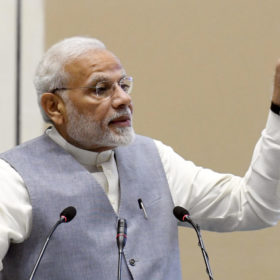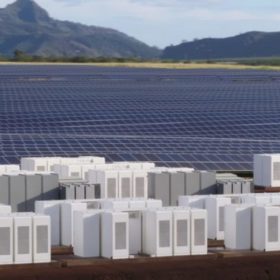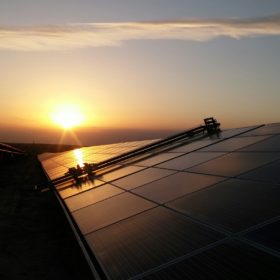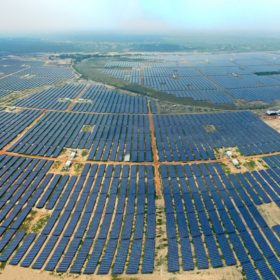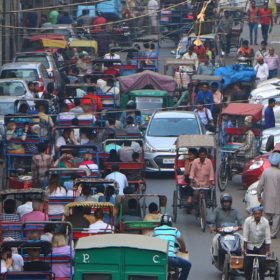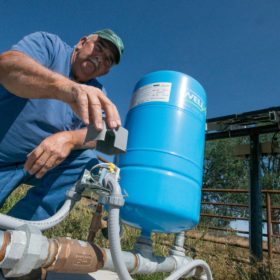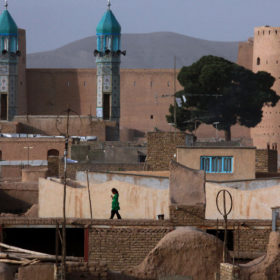PM Modi: 40% electricity generation from non-fossils by 2030, up to $80 billion for PV manufacturing
India’s Prime Minister kick started the first Assembly of the ISA, the second IORA Renewable Energy Ministerial Meeting, and the 2nd Global RE-Invest yesterday in Greater Noida. The agenda of the day? Universal access to solar energy at affordable rates; securing 40% of India’s electricity generation from non-fossil fuels by 2030, and allocating up to US$80 billion to boost domestic PV manufacturing.
Frost & Sullivan forecasts strong 2018 for solar, despite China’s policy setback
A new report published by business consultants Frost & Sullivan expects around 90 GW of new solar installations by the end of 2018, in line with the predictions of other leading analysts. It further notes that PV remains the world leader in renewable energy capacity, and that markets are moving away from feed-in tariffs to make increasing use of auction models and private PPAs.
Taiwan takes India to WTO over safeguard tariffs
Taiwan has joined Malaysia in requesting consultations with India under the safeguard agreement of the World Trade Organization (WTO), following India’s decision to impose 25% safeguard duties on imports of solar cells, whether or not assembled in modules.
Solar PV to grow 65-fold by 2050, 2°C target will be missed by a long shot – report
DNV GL has issued its annual Energy Transition Outlook. It reports that global electricity demand is set to grow by a factor of 2.5. Over half of this demand is expected to be met with renewable energy by 2050, while storage will play a key role. It adds that grid infrastructure expenditures are less related to variable renewable energy assets than to increasing energy demand. In the current scenario, meanwhile, global warming is likely to reach 2.6°C.
Renewables 2.0: Preparing for the new complexity of renewable energy in a post-subsidy world
As the deployment of renewable energy continues to expand around the world, driven by various inputs, such as capital allocation and investment, falling capital costs, competitive LCOE and various policy mechanisms, we are now moving towards a new era for renewable energy. ‘Renewables 2.0’ will have significant, wide-ranging consequences for all market players, as regulators reduce their support and power producers seek new revenue models. In this article, Duncan Ritchie, partner at Apricum – The Cleantech Advisory, will look at the key market developments for renewables, explode the myth of grid parity, highlight the need for flexibility and explain the importance of new financing solutions that are capable of meeting the new complexities brought about by ‘Renewables 2.0’.
Tamil Nadu targets 400% jump in solar capacity by 2022
The state government is proposing a range of incentives and mandates to drive PV and solar thermal installations to almost 9 GW within four years. Under the proposed policy, 10% of the public fleet would be replaced by electric vehicles.
Saft buys out JV partner and announces lith-ion investment
The historic French brand says it will focus on rail, telecom and infrastructure, but environmentalists hoping the move finally heralds a breakthrough for electric vehicles in one of the world’s biggest transport markets appear set to be disappointed.
EESL chosen to manage 5 lakh solar water pump program
The International Solar Alliance has selected India’s Super Energy Service Company to roll out its agricultural solar initiative across 13 nations. Almost a third of India’s three crore of agricultural pumps are currently powered by diesel.
Rs2.44 solar bid equalled in Gujarat – but is it viable?
The state’s second attempt to tender for 500 MW of capacity has made a mockery of predictions of rising PV electricity prices and exonerated utility for cancelling previous procurement round. But the absence of India’s cheapest solar energy generator from the latest exercise could be telling.
World Bank to help Afghanistan tender 40 MW solar project
The International Financial Corporation will help the country’s government competitively tender the project, which is expected to be developed through a public-private partnership.
